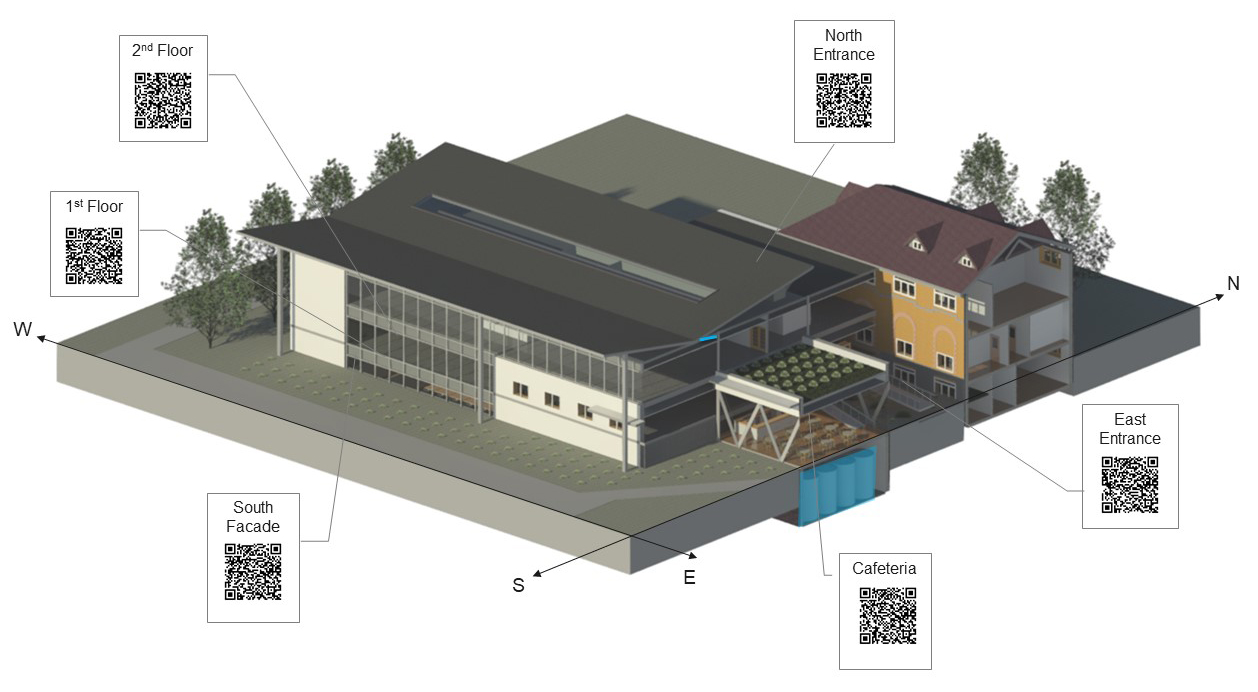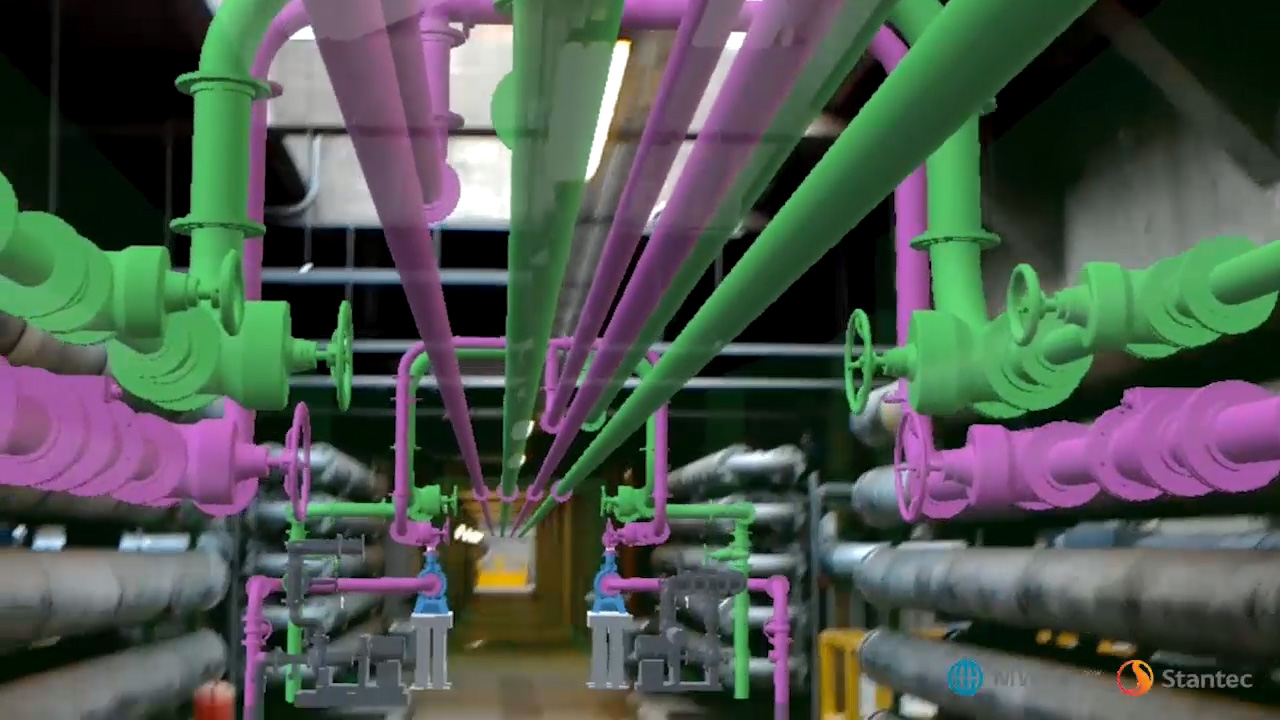Building Information Modelling (BIM) and Extended Reality (XR) can be combined to create greater efficiency if we know the workflows and implementation strategies well.
“Industry 4.0 for the Built Environment” is a key topic in our sector and it is also the title of a new Springer book edited by Marzia Bolpagni, Rui Gavina, and Diogo Rodrigo Ribeiro. Extended reality is one of the topics covered in the book chapter authored by Joseph Huang who is sharing here a summary for our readers.
In the Architecture, Engineering, Construction, and Operation (AECO) industry, BIM and XR are two of a few innovations in the twenty-first century that provide parametric design and immersive virtual design review experience. Throughout history, the drafting tools have been evolved from 2D hand drafting to 2D/3D computer-aided design (CAD) with a more efficient process and accurate results. Transitioning from CAD, BIM is beyond 3D modeling but embedded asset information as the single source of the truth throughout the project lifecycle. BIM is a process that involves generating and managing “shared digital representations” of the physical and functional characteristics of any built objects, like buildings, infrastructure, and process plants.
Unlocking the full potential of BIM with XR
Despite its success so far, BIM usage has not yet reached its full potential. While BIM enables us to understand a project conveniently, its weakness is not being able to walk through the project on a real human scale. It would be ideal if the real scale could be represented in the model with an easy button to activate, and the design can be discussed interactively with other project stakeholders. In that way, the users can “feel” the materials, lighting, furniture, and further small details from the model and see them from multiple perspectives.
Extended Reality (XR) provides a solution to this issue. XR is a collective term for immersive technologies – including virtual reality (VR), augmented reality (AR), and mixed reality (MR) technologies – that cover the spectrum of experiences that blur the line between the real world and virtual environments. Although the strongest demand for these immersive technologies currently comes from the “creative industries” (such as video entertainment and gaming), XR technologies have enormous potential to improve AECO efficiency and productivity. The possibilities need to be continuously discovered by extensive research like understanding the latest available headsets and software applications and experimentally applying XR into real projects.
We need to understand the development of XR in terms of its concept, history, definition, and terminologies, followed by an elaboration of currently available headsets, tools, and software applications. More importantly, we should learn various BIM-to-XR workflows and their application to real-world projects. However, due to the rapid development of XR technologies, the interoperability between different versions/generations of software/hardware is becoming a new challenge. For example, a simple iOS upgrade can disrupt a matured application’s functionality, and software developers/vendors have no better solution or workaround due to a lack of coordination and communication. Therefore, we need to learn agile practices from the software development industry to adopt seemingly “bleeding edge” technologies in this fast-changing world.
The six essential skills
Here are six essential skills that AECO industry professionals can adopt to implement extended reality as an expansion from their current BIM practices:
1. Define the problems and understand what you want to achieve
Like most research methodologies, defining the problems is the first step to narrowing down the issues and figuring out the solutions in-depth. Some people bought the fancy VR and AR/MR headsets just for marketing or catching up with the fashion-show-like digital technology trend. However, we can only optimize the value of XR if we know what we want to achieve in real-world scenarios.
2. Understand the available tools
Many available tools in the market allow us to explore before reinventing the wheel. From VR to AR/MR headsets and 360° cameras and the software applications to convert the BIM/3D models to be viewable in the headsets. If we need additional development or customization, we can use some gaming engines like Unity and Unreal Engine to fit our needs.
3. Understand the workflows from BIM to Extended Reality
Most BIM/CAD platforms like Autodesk Revit and Navisworks have a plugin to convert the 3D model into a particular format for viewing by a VR headset (3 or 6 Degrees of Freedom) after installing the VR application (i.e., Enscape or Fuzor). Most AR applications are available for smartphones and tablets, which we can see the overlapping objects between the digital and real world. Currently, there are very limited options for MR headsets, and Microsoft HoloLens is the most popular one. We can use a free app called “3D Viewer” to review 3D models with FBX or OBJ format and use VisualLive or Fuzor for advanced interaction with the models (Fig. 1).

4. Start with something small to prove the concept
Depending on the budget and desired outcomes for XR implementation, you can start it with a USD$15 cardboard VR headset or a USD$3500 HoloLens 2 “wearable computer.” When I taught at Northwestern University, one of the exercises I designed was to create a VR poster (Fig. 2) with a series of QR codes embedded. Students applied that on their design projects, and the audiences can see it via scanning the QR codes from their smartphone plus viewing it from the cardboard VR headset.


5. Sell the value and get paid as part of the professional services
In order to implement XR to your business successfully, we need to integrate it as part of the design workflow and sell the value. The result is not just a “gift” to our clients. We can provide the design solutions with a human scale before the construction begins. We also can use this technology to review the construction process, like the proposed design versus the existing condition (Fig. 3), and report it to the office for additional help (i.e., Dynamics 365 Remote Assist on HoloLens). How to sell these benefits to our clients is as important as how to master those tools.


6. Keep your radar on via any kind of resources
When my students asked me about where to get the textbook or reference materials, I felt it was hard to find any published books on this subject. Due to rapidly changing technologies, some published papers are outdated after one year, and some vendors are out of the business after two years (bleeding-edge technology).
The best way to learn the latest XR information is to keep your radar on any kind of resources like online publications, webinars, social media posts, conference handouts, experiment notes, etc. The point is to keep learning by exploring new knowledge and adopting the latest technologies to our projects.
View the original article and our Inspiration here


Leave a Reply